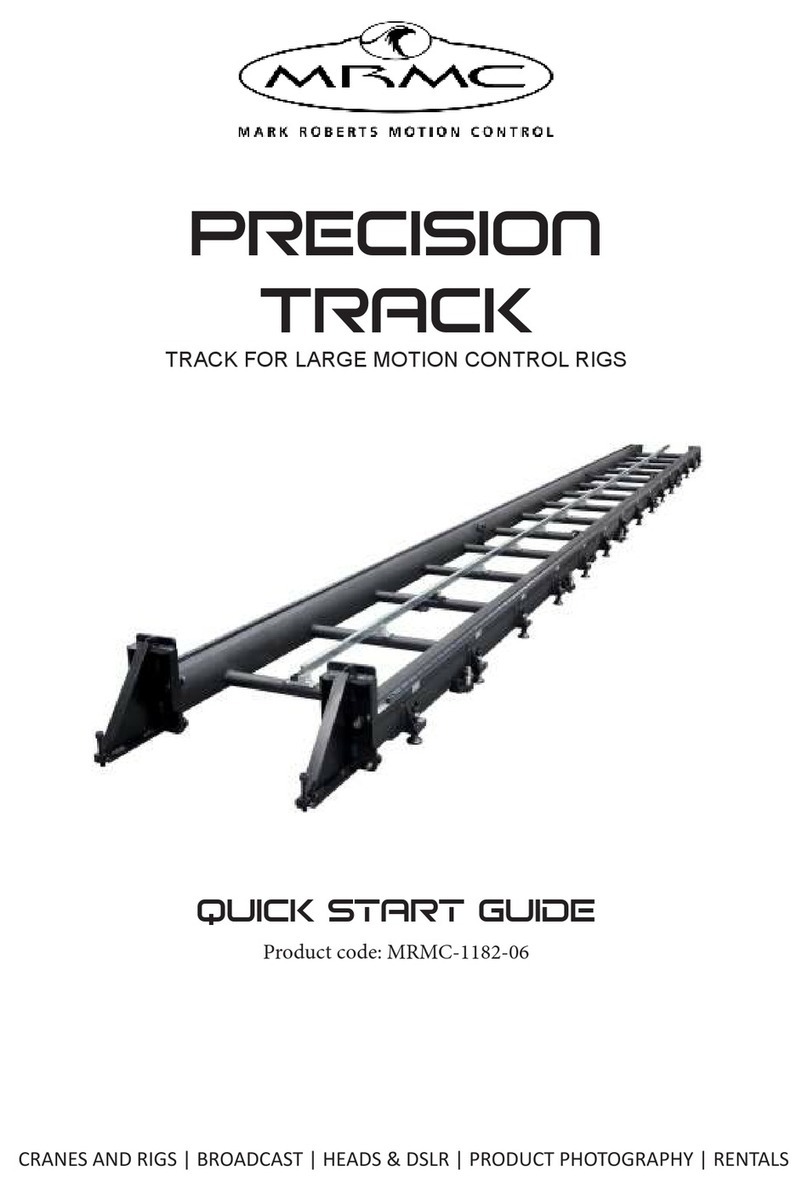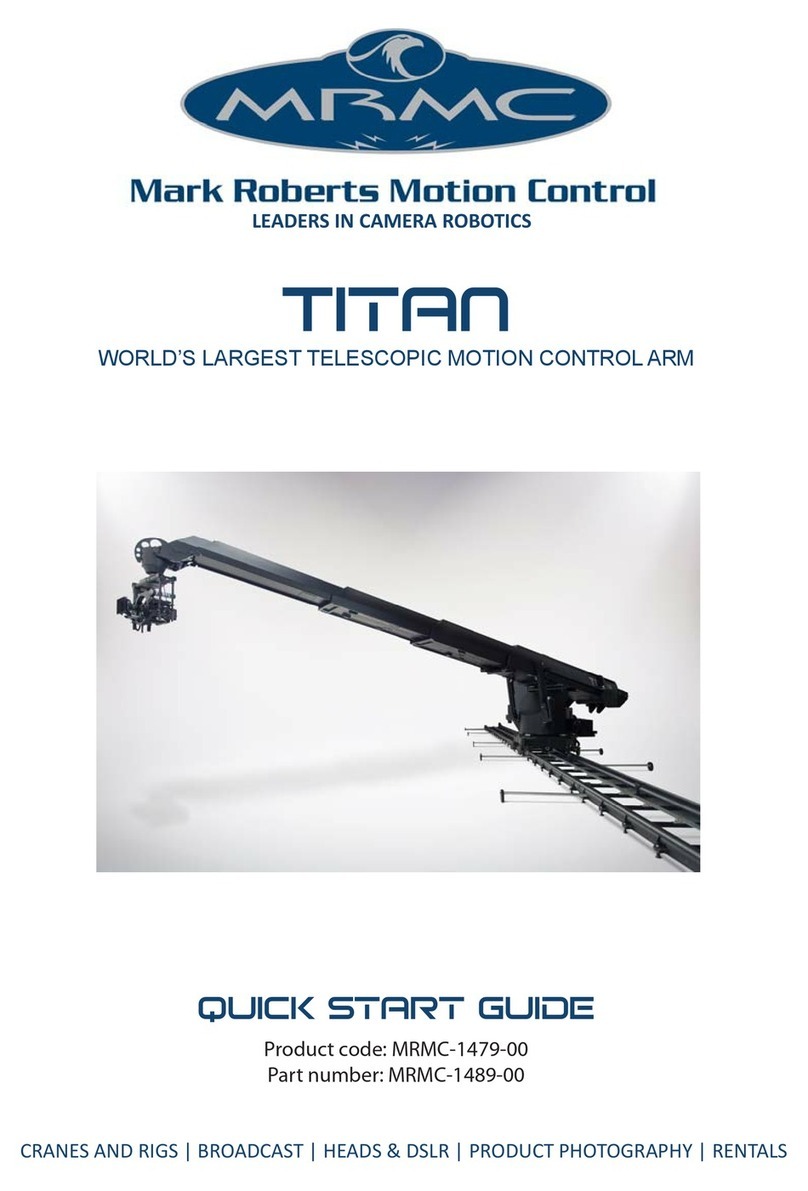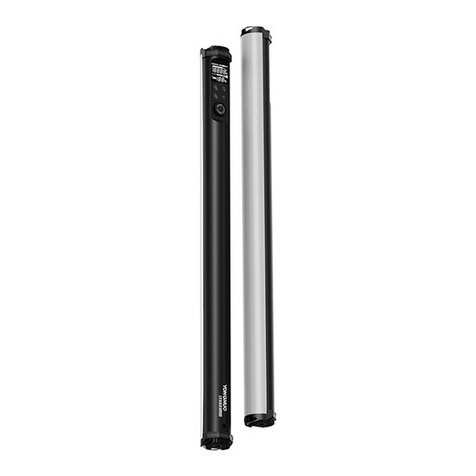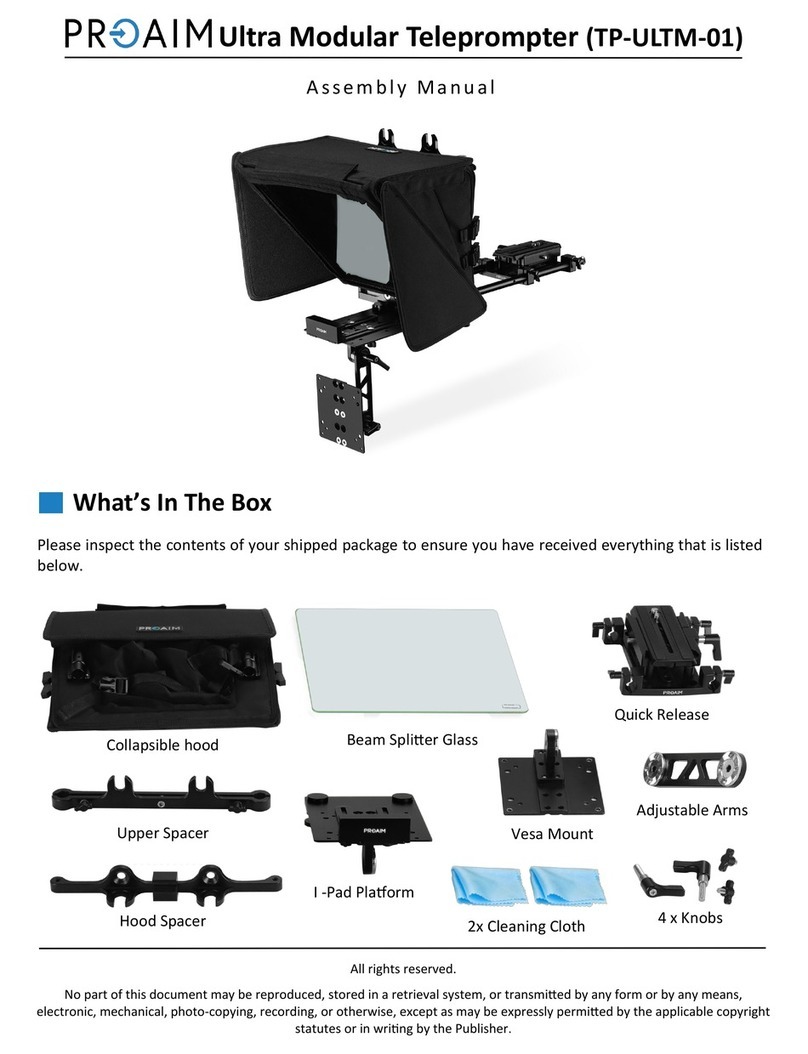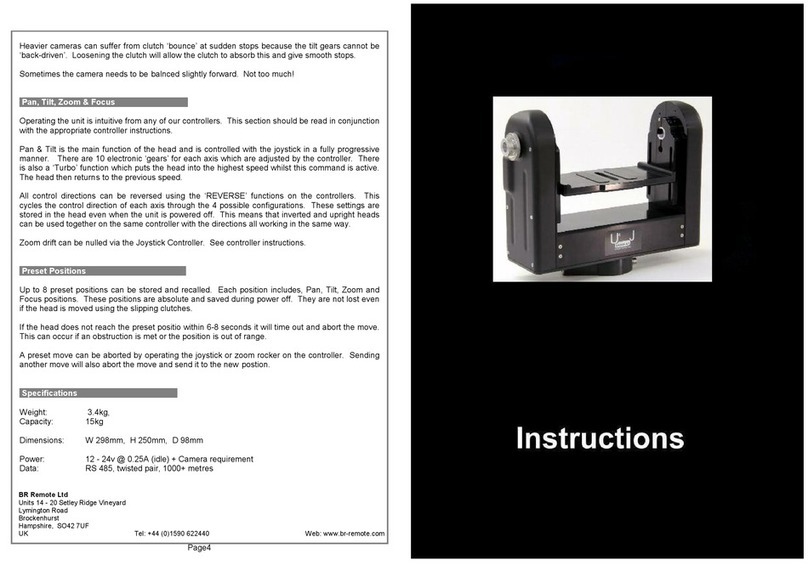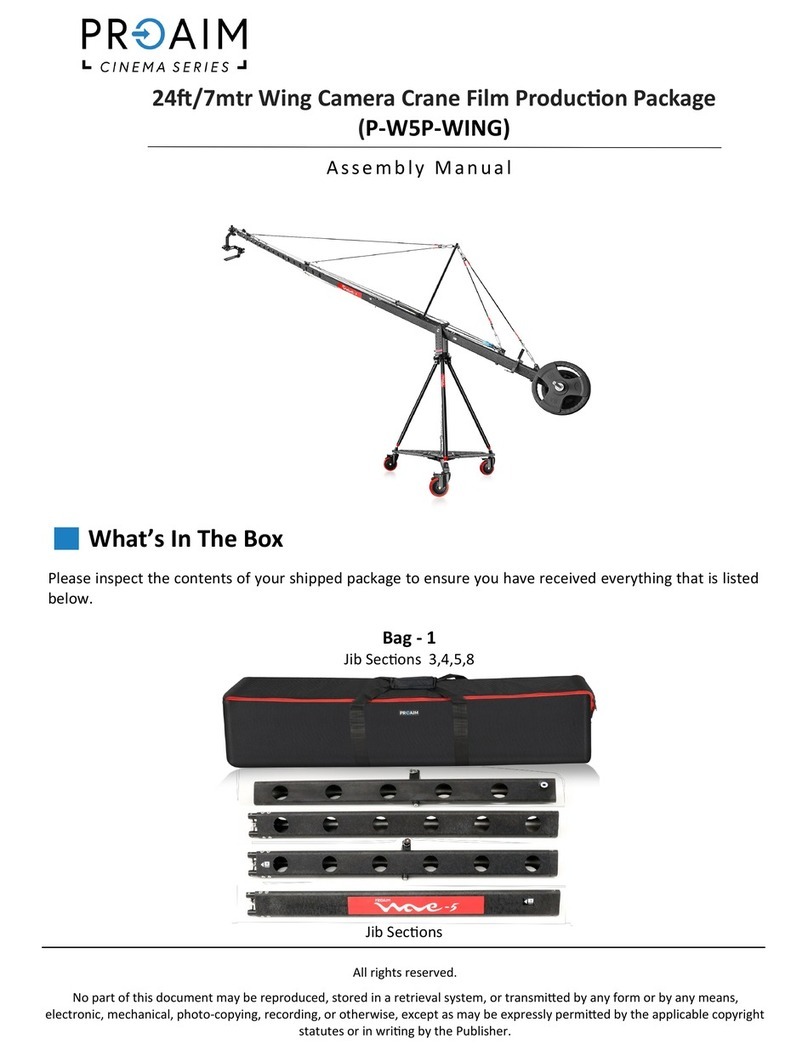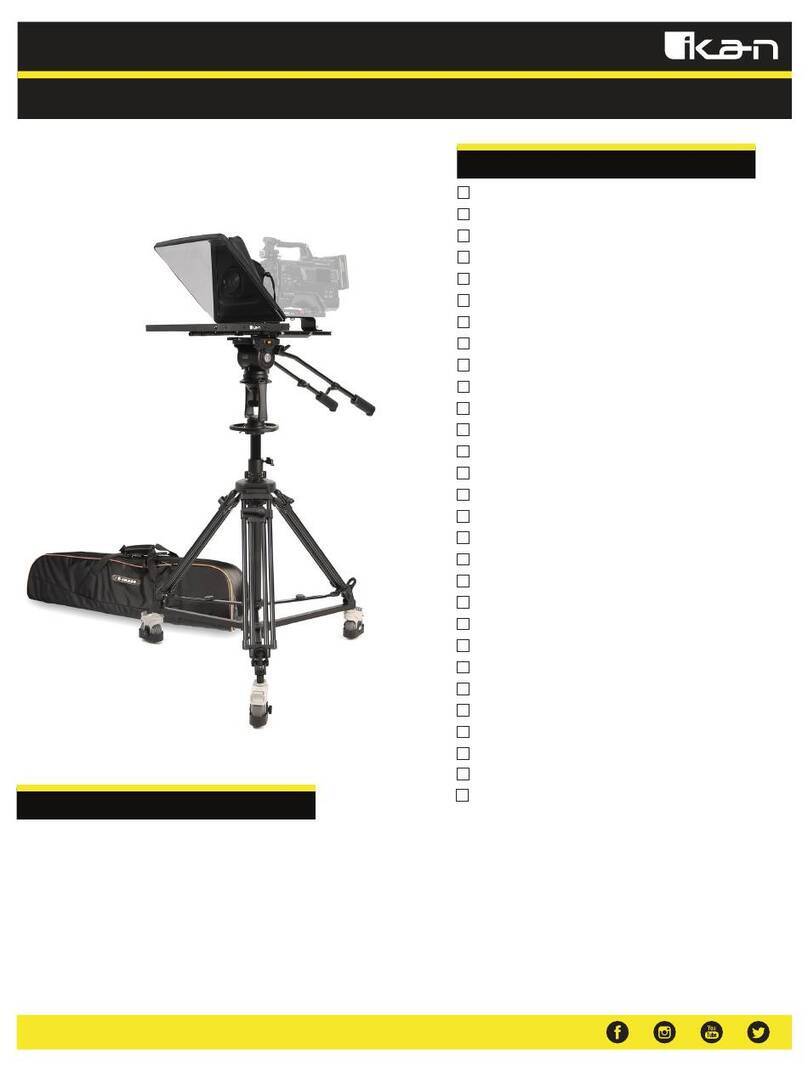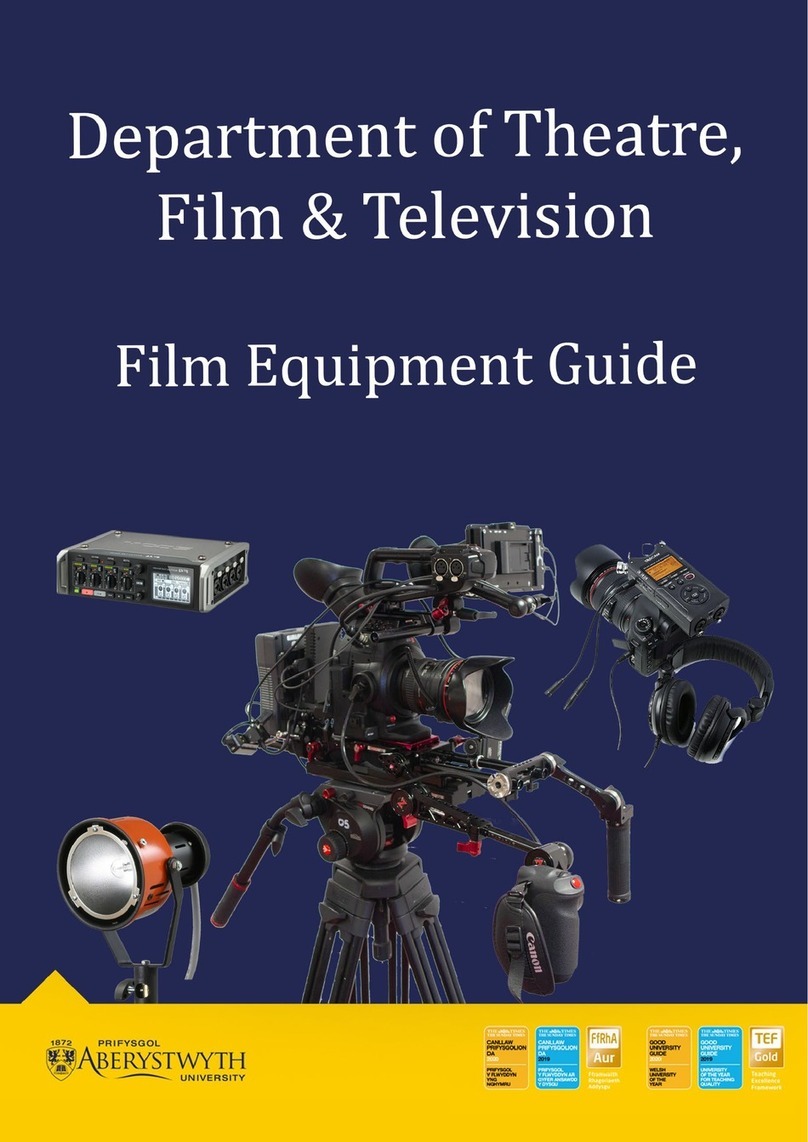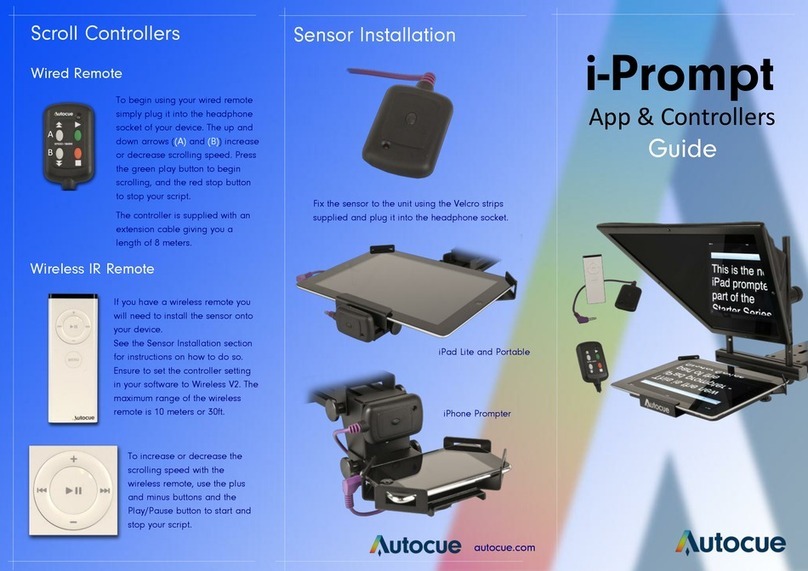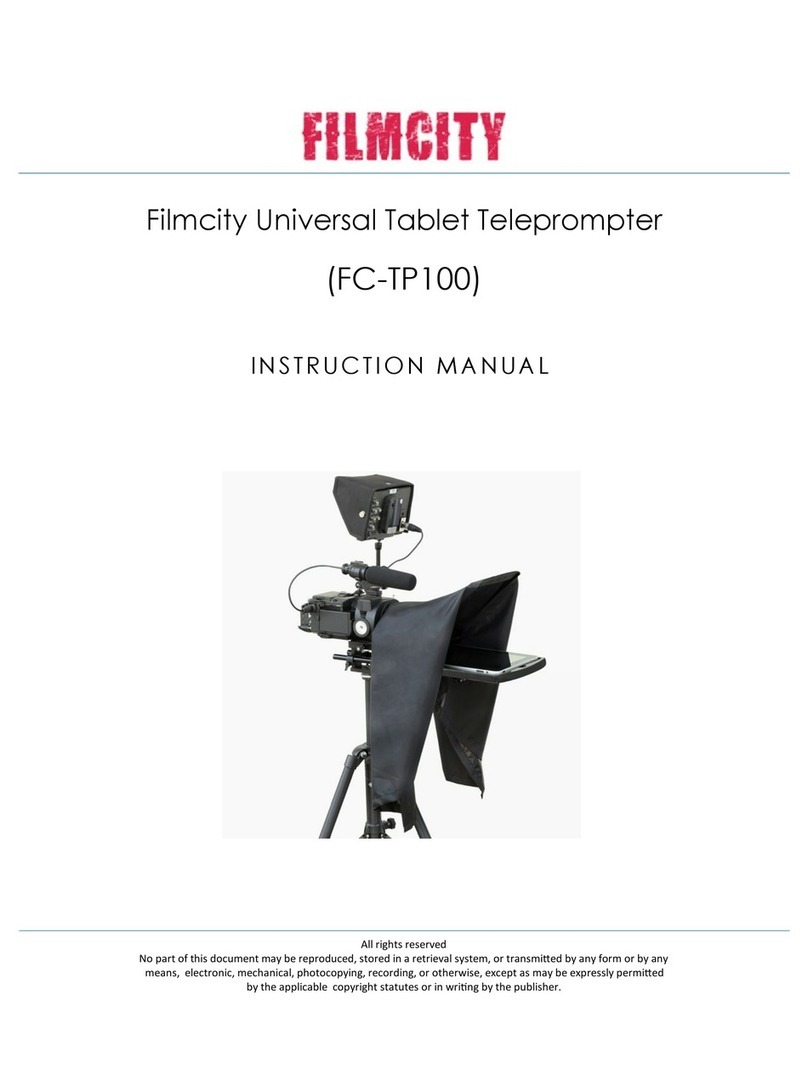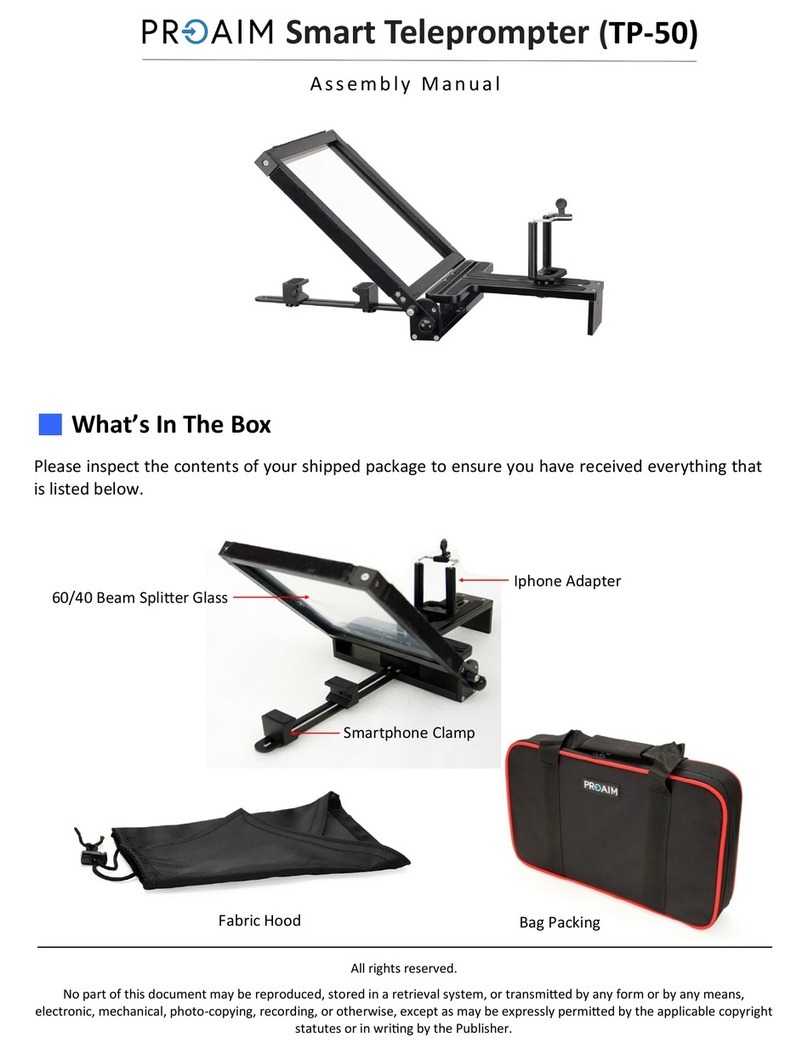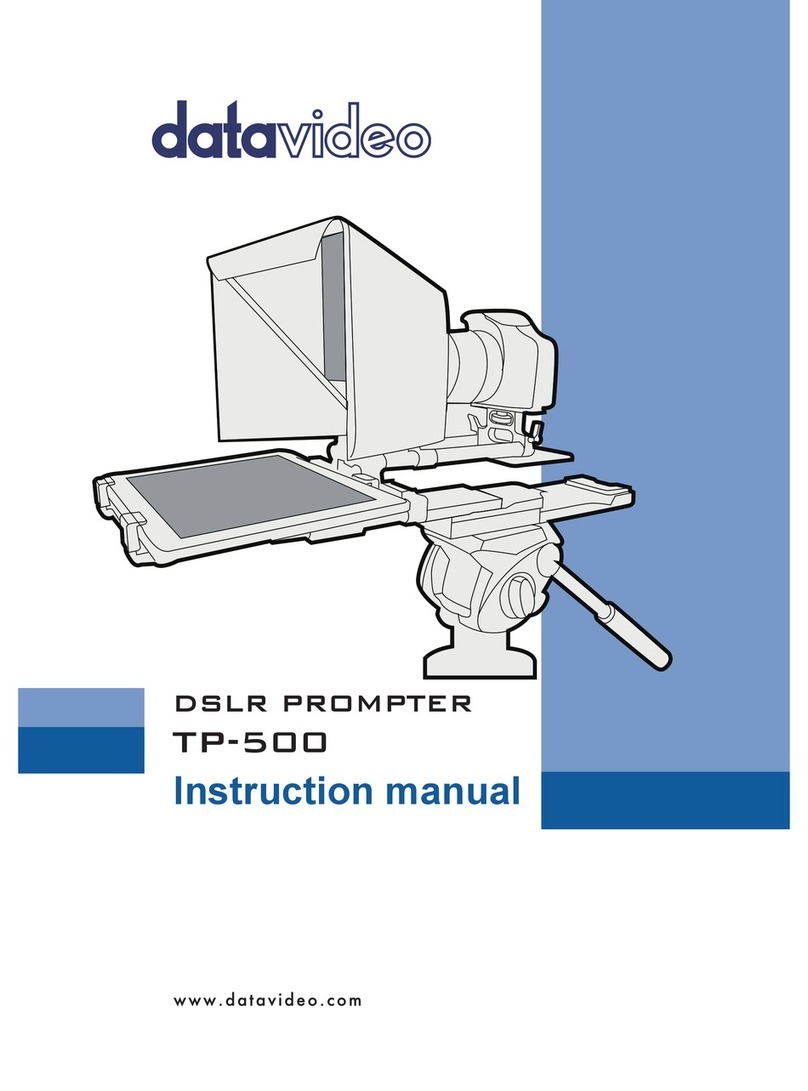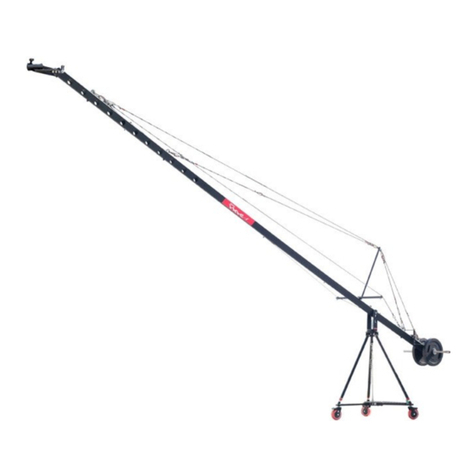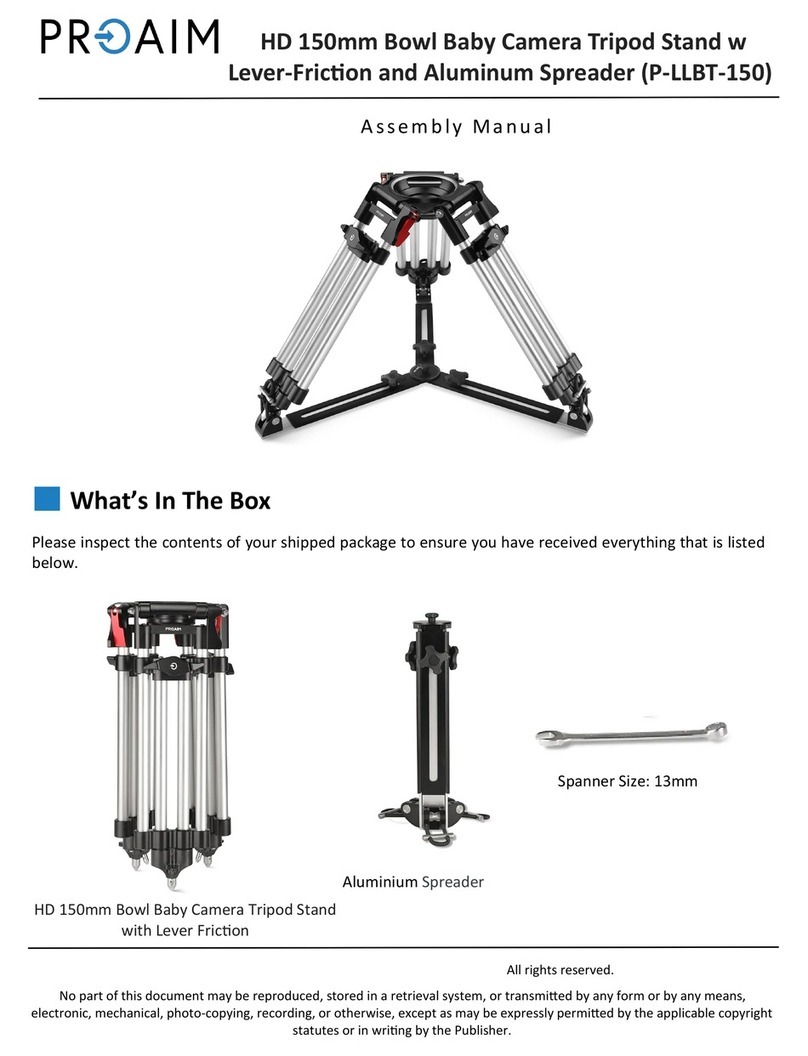MRMC SFH-30 User manual

ii
SFH-30 Quick Start Guide
QSG Product Code: MRMC-1199-02
Products Covered: MRMC-1199-00A, MRMC-1276-00
Modification Date: 4 June 2020
© 2020 Mark Roberts Motion Control Ltd. All rights reserved.
No part of this publication may be reproduced, transmitted, or translated
by any means — graphical, electronic, or mechanical — including
photocopying, recording, taping, or storage in an information retrieval
system, without the express written permission of Mark Roberts Motion
Control.
Although every care has been taken to ensure that the information in this
document is accurate and up to date, Mark Roberts Motion Control
continuously strives to improve their products and may make changes to
the hardware, firmware, and software described in this document. Mark
Roberts Motion Control therefore cannot be held responsible for any
error or omission in this document.
All product names mentioned herein are the trademarks or registered
trademarks of their respective owners.
Contact information
Mark Roberts Motion Control Ltd.
Unit 3, South East Studios
Blindley Heath
Surrey
RH7 6JP
United Kingdom
Telephone: +44 (0) 1342 838000
Web: www.mrmoco.com
www.mrmocorentals.com

SFH-30 Quick Start Guide
iii
SFH-30 Quick Start GuideSFH-30Quick Start Guide
Contents
Chapter 1 Quick Start..................................................................... 1
Safety........................................................................................1
Overview ................................................................................. 1
Setting up the hardware ........................................................2
Connecting the cables ...........................................................5
Your first session ....................................................................7
Subsequent sessions.............................................................10
Appendix 1 Troubleshooting........................................................... 11
Typical symptoms, causes, and actions .............................11
Working with Local Area Networks..................................12
Introduction to LAN addresses ................................12
Managing LAN addresses with Flair........................14
Appendix 2 SFH-30 Panel ............................................................... 18
Introduction to SFH-30 connections ................................18
Quad-box connector summary..........................................19
Quad-box connector pin-out information .......................21
Stepper motor connector...........................................21
Power 18-36 Volts connector ....................................21
Serial RS232 connector ..............................................21
Trigger connector (trigger out and in).....................22
Appendix 3 Specifications............................................................... 24

SFH-30 Quick Start Guide
iv

SFH-30 Quick Start Guide
1
SFH-30 Quick Start GuideSFH-30Quick Start Guide
Chapter 1 Quick Start
Safety
•Do not use around flammable gas. All electrical equipment can
generate sparks that can ignite flammable gas.
•The head has powerful motors that can pinch, so take care not to get
your hands trapped in the head or cabling.
•Keep the equipment dry. The system has not been made
weatherproof. Do not use with wet hands.
•Keep cables tidy. Use cable ties to keep them out of harm’s way. If
you have a head with slip rings then make use of them; avoid
running any cables between the base and the rotating head or
camera.
Overview
Thank you for using the SFH-30 robotic camera head from Mark Roberts
Motion Control (MRMC). The SFH-30 head is designed for reliable
day-in, day-out use in professional studio environments. The versatility of
the SFH-30 makes it suitable for live action, stills, and time-lapse
applications.
You can connect your SFH-30 to any MRMC controller, such as a PC
running Flair Motion Control Software or one of the MSA-based
controllers such the Large Flat Panel (LFP), MSA-20 Handwheels,
Joystick Controller, or Mini MSA.

SFH-30 Quick Start Guide
2
Setting up the hardware
1. Mount the SFH-30 head onto your choice of support, such as a
heavy-duty tripod or Dual Monorail. The head can be over-slung
(sitting on a tripod or platform) or under-slung (hanging from its
mount).
If you are mounting the head on a platform that has a key (such as a
Dual Monorail carriage), make sure you line up the key on the
platform with the slot in the head.
Further details about mounting specifications are described in
Appendix 3 Specifications.
Dual Monorail
carriage
Over-slung
Under-slung
Head mounting bolt
Camera mounting bolt
Spare camera
mounting bolt
Key
Slot

SFH-30 Quick Start Guide
3
2. If you are using an external Lens Control Motor (LCM) mounted on
the head, bolt the mounting rod onto the head, then mount the
LCM onto the rod in approximately the correct position. You can
fine-tune the position later.
Mounting
rod
LCM: Zoom

SFH-30 Quick Start Guide
4
3. Place the camera on the platform, move the camera forward or
backward to balance the platform in Tilt, then insert the camera
mounting bolt under the platform and into the bottom of the
camera housing and tighten firmly.
4. If you are using a head-mounted Lens Control Motor (LCM), adjust
its position on the rod so that the LCM gear meshes firmly with the
lens gear.

SFH-30 Quick Start Guide
5
Connecting the cables
24V 5A
#1 PAN
#2 TILT
#3 TRACK
ETHERNET
Front
Example controller:
Mini MSA
POWER 18-36V
Connectors #1-#4 on the Quad-box are identical and
can be used for any stepper motors. The diagram shows
a typical application. Attach the power cables last.
Quad-box
Quad-box
The head and
controller
both use the
same type of
power supply
brick.
Rear
#4 ZOOM LCM
MOTOR

SFH-30 Quick Start Guide
6
The controller can be any MRMC controller such as a PC running Flair
Motion Control Software or one of the MSA-based controllers such the
Large Flat Panel (LFP), MSA-20 Handwheels, Joystick Controller, or Mini
MSA.
If you have mounted the SFH-30 on a Dual Monorail, tidy the cables by
tying them to the cable arm, including the trailing Ethernet and Power
cables that go to the controller, so they don’t catch on the track or track
motor:
Hint
If you use a controller that has a POWER OUT socket, you should
not use this socket to power the head. If you do so then powering up
the controller will simultaneously power up the head, and in this
case powering up two Ethernet devices at the same time on the same
network can cause communication problems between them.
Cable arm
Ethernet
Power

SFH-30 Quick Start Guide
7
Your first session
Instructions for using the SFH-30 head with a specific controller, or with
Flair Motion Control Software running on a PC, are beyond the scope of
this manual. The first time you use the head you typically need to
perform the steps given below. Refer to the manual that came with your
controller or software for details.
1. Attach the power cables to the head and controller.
There is no power switch on the SFH-30 head; the power is
on whenever the 24-volt power supply is attached and live.
After you have attached the power cable, make sure the
power indicator LED on the head lights up.
Similarly, to turn off the head you simply remove the power cable.
All MRMC controllers and heads have robust electronics that are
designed to withstand the rigours of connection and disconnection
to live power cables.
2. Load the head.
The head does not retain any operating system when it is switched
off, so when you turn on the head you must load the head operating
system from the attached controller or PC.
For example to load the head from an MSA-based controller from
MRMC (such as the LFP, MSA-20 Handwheels, Joystick Controller,
or Mini MSA) you press the SELECT knob on the controller when
prompted to do so. Different head models and controller-head
connection methods use different operating systems, so be sure that
the operating system that you load from your controller is the
Hint
It is a good idea to attach the power cables last, after all the
other cables are in place.
It is also recommended that you power up the controller last,
after powering up the head if you are using Ethernet to connect
the head to the controller, as powering up two devices
simultaneously on the same Ethernet network can cause
communication problems.
Power
LED

SFH-30 Quick Start Guide
8
correct one for your particular SFH-30 head model and connection
method.
3. Set the control directions.
In your controller or software you need to specify the directions of
the focus, zoom and joystick/handwheel controls for your particular
head, lens gearing attachments, and preference. For example, some
people prefer the camera to point upward when the joystick is pulled
back, while others prefer the opposite logic whereby pushing
forward (“up”) on the joystick targets the camera upward in the
scene.
For example to set the control directions on an LFP controller you
use the menu option SET DIRECTION. On the MSA-20 Handwheels,
Joystick Controller, or Mini MSA you can use the same menu option
or use the FWD and REV hardware switches.
4. Zero the axes.
At the beginning of each session, after loading the head, you need to
zero the axes. This defines a base position at which all head
positions and lens settings are set to zero (0) in the controller or
software. All limits, lens controls, preset positions, and moves that
are stored in the controller or software are measured relative to this
base position. The zero points themselves are not stored in the head
or lens when the power is off, so you need to define them at the start
of each session, by zeroing the axes. Controllers usually offer two
different ways to zero the axes: an automatic method and a manual
method:
In the automatic method (sometimes called homing), the
controller physically moves the axes to the home positions that
are built into the hardware (if your head has the optional
homing facility) and then assigns these positions as the zero
points for the axes. For example to automatically zero the axes
with an MSA-based controller (such as the LFP, MSA-20
Handwheels, Joystick Controller, or Mini MSA) you can go
into film mode and use the menu option HOME AXES >ALL
AXES.
In the manual method (sometimes called direct zeroing) you
use the controls to point the camera head in the direction that
you want to use as the zero position for the head axes and then
manually set the current axes positions as the zero points. For

SFH-30 Quick Start Guide
9
example to directly set the current axes positions as the zero
points on an MSA-based controller you use the menu option
DIRECT ZERO ALL.
Hints
If you plan on having several manually zeroed sessions at the
same site then you should pick an object in the camera’s field of
view that you can use as the zero position for the head for every
session. The object should be easily identifiable, stationary, and
repeatable, such as the corner of a ceiling.
To zero the axes with an external Zoom Lens Control Motor
attached to the Quad-box, you first set the zoom to wide-angle
(zoomed out all the way). You then use the controller to zero all
the axes — either automatically or manually.
If you are using the head in an underslung configuration it is
recommended that you use the manual method for zeroing the
axes. Depending on the controller or software settings, the
automatic method might pan or tilt the camera into a home
orientation that is 180° from your working target orientation,
which can be potentially awkward or risky for the attached
equipment.

SFH-30 Quick Start Guide
10
5. Set the limits.
In order to prevent damage to cables and other equipment, you can
set limits to the range of physical travel of the head movement and
lens controls.
For example to set the limits on an MSA-based controller (such as
the LFP, MSA-20 Handwheels, Joystick Controller, or Mini MSA)
you use the menu option SET SOFT LIMITS.
Subsequent sessions
After you have initially set up the system for your particular camera lens
and preferences, subsequent sessions take less time to set up, especially if
you have not disconnected control cables or moved sites. For subsequent
sessions at the same site you typically need to do the following at the start
of every session.
1. Attach the power cables to the head and controller.
2. Load the head.
3. Zero the axes.
If you have moved sites you will need to connect the control cables before
the power cables, and then set new limits after you have zeroed the axes.

SFH-30 Quick Start Guide
11
SFH-30 Quick Start GuideSFH-30Quick Start Guide
Appendix 1 Troubleshooting
Typical symptoms, causes, and actions
Symptoms or message
on the controller
Cause and/or action
HEAD DID NOT
LOAD
The controller failed to load the operating
system into the head.
Check that all cables are connected, and all
devices have power.
If you have connected more than one head,
connected the MRMC system to another local
network, or moved the controller and head
between networks, check that correct LAN
addresses have been entered in the controller.
See Working with Local Area Networks on page
12.
Check the order in which the devices are
powering up. If you are using an Ethernet
connection to the head, avoid powering the
head from the power output socket on the
controller in order to avoid powering up the
two devices simultaneously (which can cause
problems on small isolated Ethernet networks).
Use an independent power source for each, and
power up the head first. If you are using a
Serial connection to the head, power up the
controller first.
HEAD NOT LOADED
LOAD FAIL
FAILED TO LOAD
HEAD
FAILED TO
INITIALIZE
ETHERNET
Controls move in the
wrong direction
Change the working direction of the controls
to your preference (page 8).
Limits are being
ignored or causing the
head to oscillate when
reached.
The axes have not been zeroed. You must do
this at the beginning of each session just after
you load the head (page 8).

SFH-30 Quick Start Guide
12
Working with Local Area Networks
If you are using an Ethernet connection between the controller and the
head, they communicate with each other through an Ethernet Local Area
Network (LAN). The controller and head are devices on the network.
Under certain circumstances you might need to change the LAN settings
of the devices so that the devices not only work together, but do so when
connected to another network. For example:
If you install the controller as part of a multi-component
system.
If you connect your MRMC equipment to a local network.
If you move the equipment between networks.
If you have customised the LAN settings in a head for one of
the above reasons and then sent the head back to MRMC for
servicing. The service might change the LAN settings back to
the factory defaults, and you will need to customise them again
when you get the head back.
Introduction to LAN addresses
Each device on an Ethernet network has a suite of three addresses:
Internet Protocol (IP) address
Subnet (SN) address
Gateway (GW) address
Together, these addresses indicate the device’s identity and location on the
network. Each address is usually written as a group of four numbers
separated by periods. The factory default values used in MRMC
equipment are shown in the next table:

SFH-30 Quick Start Guide
13
The LAN addresses of the controller and head are static. That is, they will
stay the same unless you explicitly change them.
Although a simple controller setup has only two devices on the network
(the controller and the head) there are potentially three IP addresses
involved:
1. The IP address of the controller itself. You don’t ordinarily need to
change this unless you are connecting it to a local network that
requires different settings.
2. The IP address that the controller looks for when it tries to find
and load the head on the network. This must match the next IP
address...
3. The actual IP address of the head. This is usually the IP address
shown in the above table unless it has been changed, or unless you
specified a different address when you ordered the head. In any case,
the factory-set IP address of a head is ordinarily printed on a sticker
on the head.
Hint
Most local networks use the SN and GW addresses shown in the
above table, so under ordinary circumstances you will only need to
be concerned with IP addresses. The rest of this section therefore
concentrates on IP addresses, but you might also need to inspect or
change the SN and GW addresses, depending on the structure of the
network that you are using to access the head.
MRMC Controller Head
IP address 192.168.1.235 192.168.1.236
SN address 255.255.255.0 255.255.255.0
GW address 192.168.1.1 192.168.1.1
On a given local network, the last group of
numbers in the IP address must be unique
for each device. All other numbers and
addresses must be identical.

SFH-30 Quick Start Guide
14
You can usually inspect and change the first two IP address settings
directly on the controller, by accessing the LAN settings on the controller.
Once you have established a connection between the controller and the
head, you might be able to change the actual IP address of the head from
the controller. For details see the documentation that came with your
controller.
To find out the IP address of a head with an unknown history you must
connect it to a PC that has Flair Motion Control Software installed.
Details are in Managing LAN addresses with Flair on page 14.
Managing LAN addresses with Flair
The factory-set IP address of a head is printed on a sticker on the head.
If the IP address of a head has been changed to an unknown value so you
can’t load the head from the controller, you can find out the head’s IP
address by connecting the head to a Windows PC that has Flair Motion
Control Software installed on it, and use Flair to interrogate the head on
the network. You can also use Flair to change the IP, SN, and GW
addresses of the head if necessary.
1. Find a PC that has Flair Motion Control Software installed on it, or
install Flair on your own PC.
2. Attach the head to the PC with an Ethernet cable. You can use the
same Ethernet cable that was connecting the head to the controller.
3. Make sure the head has power, by checking that the power
indicator LED on the head lights up.
4. Start Flair on the PC.
5. If you get any error messages, click on OK to close them.
6. When you get a message about network failure, click on the
Network Setup button in the message:
Power
LED

SFH-30 Quick Start Guide
15
or...
If the Flair installation already has a valid head connection on a
network then you might not get the network failure message. In this
case, start the Network Setup facility manually by choosing the
Setups >Network Setup menu option in Flair.
The Network Setup window, Connection tab, lists the Nodes (head
connections) that Flair is looking for, as defined in the
NetworkDirect.ini file. Any changes that you make and Save in the
Network Setup window are saved in the NetworkDirect.ini file. You
can also edit this file by using the menu option Help >View
Network .ini File. If Flair cannot find the head on the network at
the IP address shown then the node’s status is Not connected.
7. In the Network Setup window click on Find, then on OK in the
pop-up to confirm:

SFH-30 Quick Start Guide
16
8. An Information pop-up displays information about the heads that
Flair has found on the network:
Make a note of the head’s IP address that is displayed in the pop-up;
for example 192.168.1.236.
9. If you want to use the head with Flair or change any of the head’s
LAN addresses, follow the substeps below:
9.1 Enter the head’s existing IP address (as shown in the
Information pop-up) into the Network Setup window and click
on Save.
9.2 Click on Load to reset and load the head.
Once Flair is connected to the head, any LAN address changes
that you make and Save in the Network Setup window will also
affect the LAN addresses stored in the head.
9.3 To change the IP address of the head, enter the new IP address
into the Network Setup window now and click on Save.
The Status temporarily changes to Not connected as Flair
changes the IP address in the head, then to Connected as Flair
reconnects with the head at its new IP address.
9.4 To inspect or change the SN or GW address of the head, click
on Find again. A pop-up shows the head’s three current LAN
addresses, and the Subnet Mask (SN) and Default Gateway
(GW) fields in the Network Setup window become editable.
This manual suits for next models
2
Table of contents
Other MRMC Professional Video Accessories manuals


